- Guide based on suits by Manguwu, most infomation should be transferrable -
Fursuiting (in general)
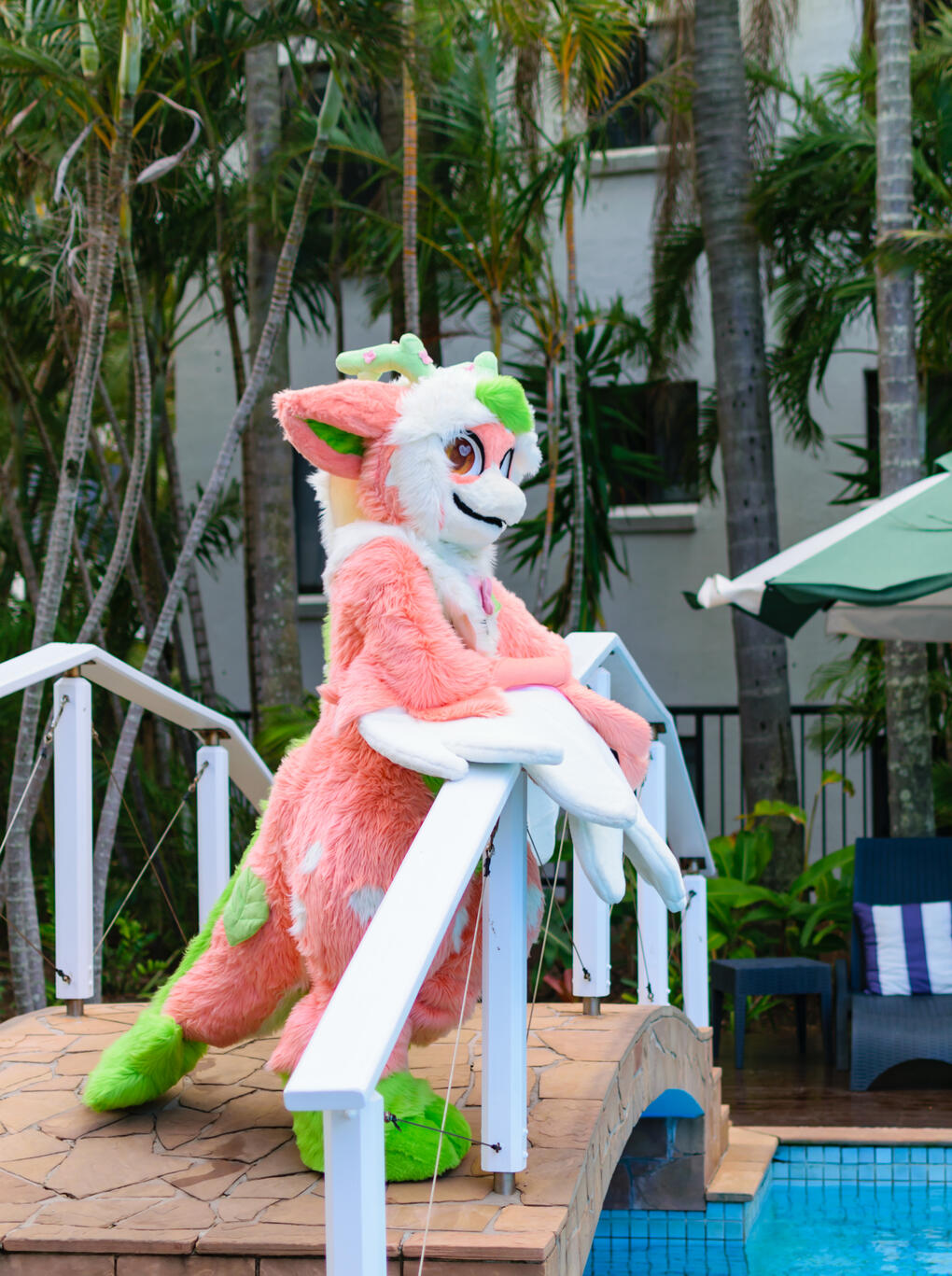
I recommend wearing "underarmor heat gear" underneath your suit. It is form fitting and makes suiting up and down much easier. Other sports gear also works, but wearing something keeps sweat out & you cool...er
Underarmor? - A brand of clothing for excersise, will be found at most sports stores
Wear a balaclava for the same reasons above!
I recommend having a handler but make sure to have a friend nearby to make sure everything is good
DRINK WATER ! !
Take breaks accordingly, your body has limits
Be careful of your surroundings, you take up a larger space now
Communicating in fursuit is a little bit harder. Use body gestures and simple 'fursuiter' sign language to convey what you want
Acting in fursuit also needs more exaggerated movements if you want to get into character
Useful things to own
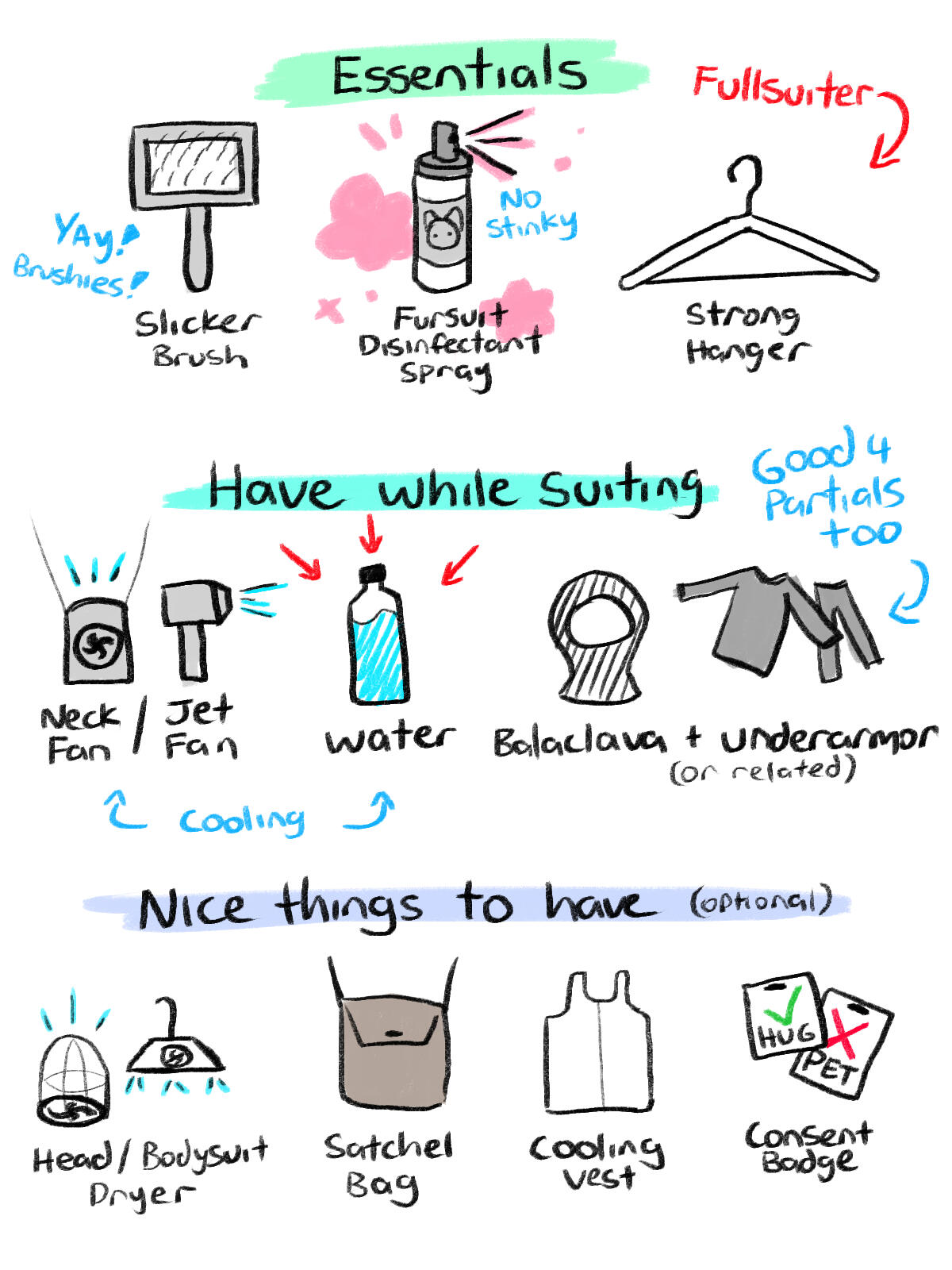
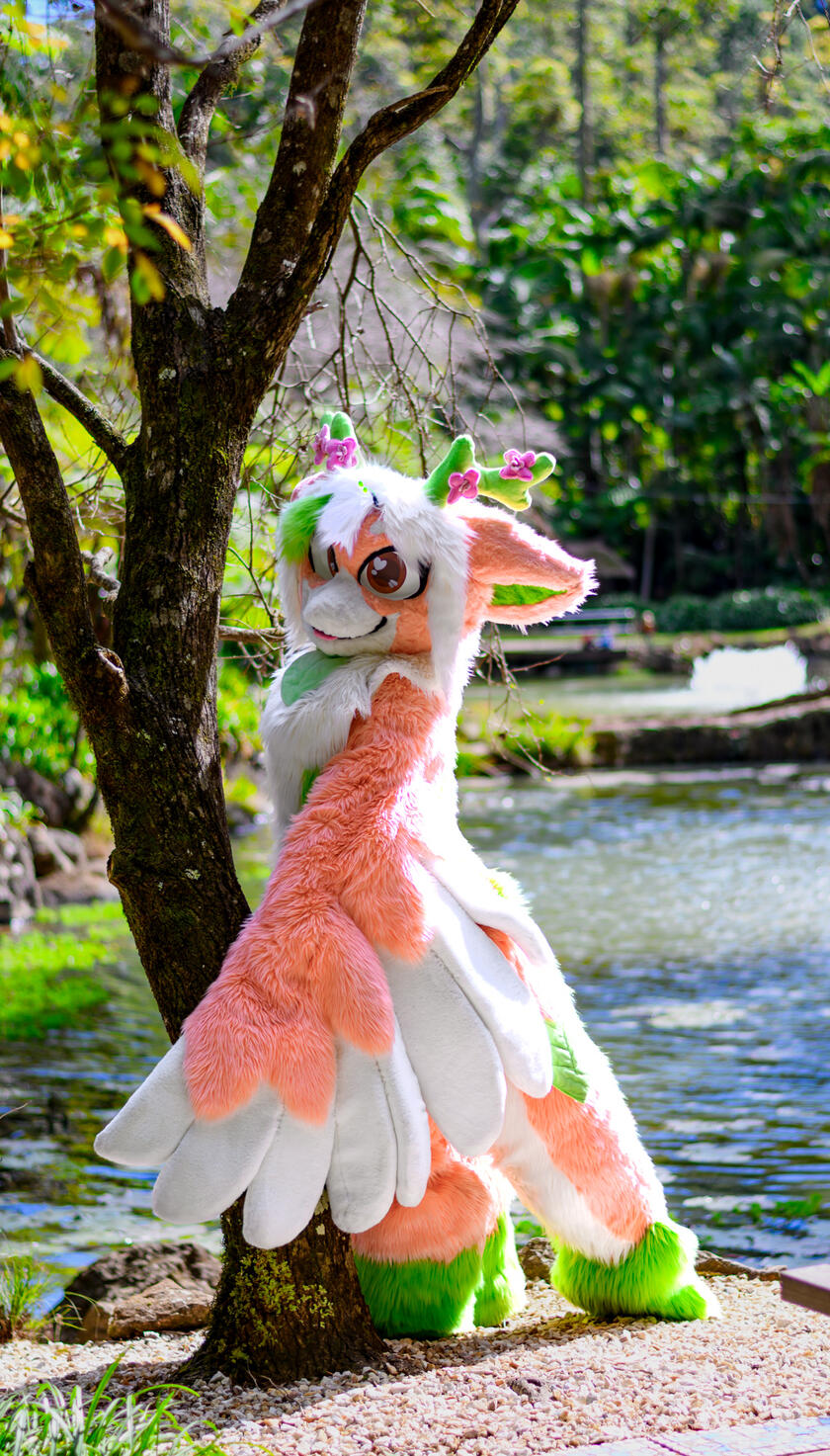
After Fursuiting care (and storage)
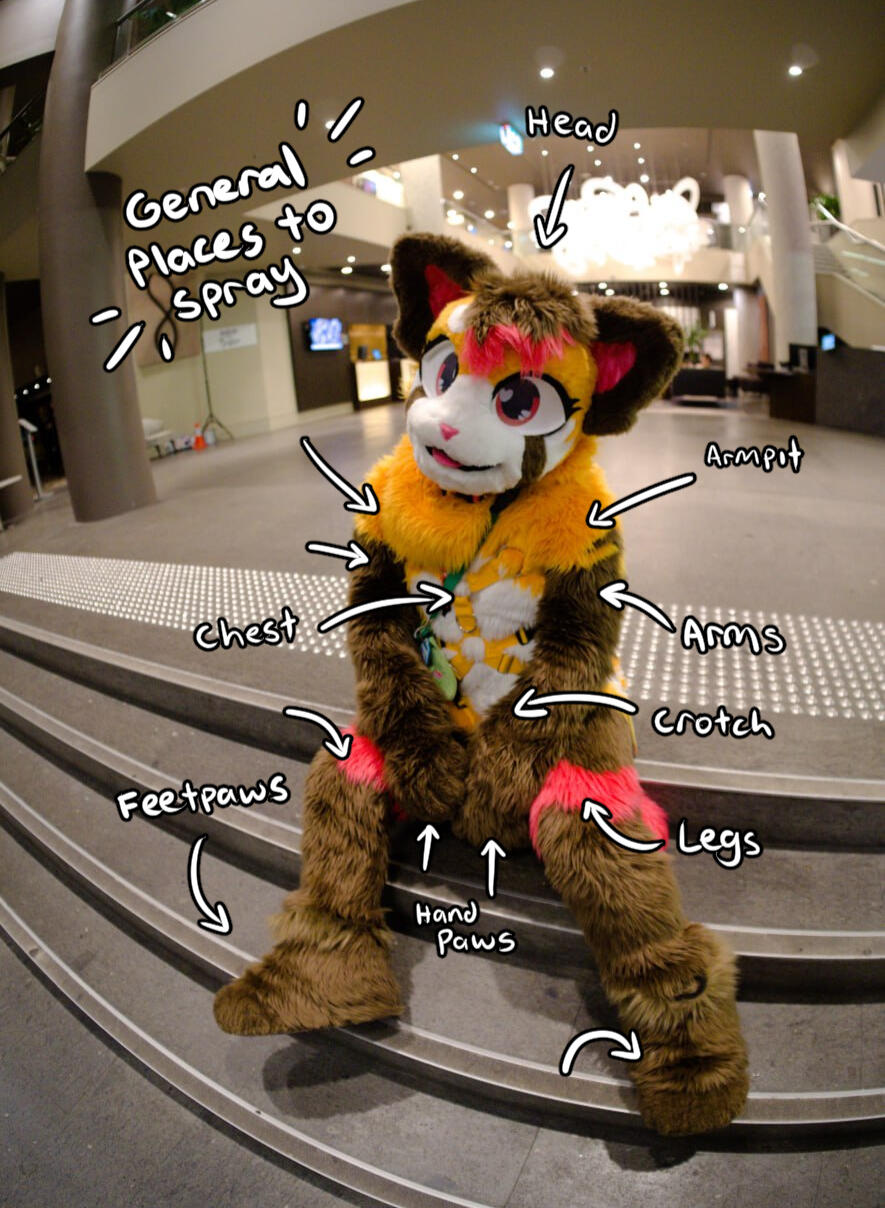
Have a drink!
Air out suit after suiting sessions, use fan or a fursuit drying hanger if possible
Use fursuit spray to disinfect right after de-suiting, commercial disinfecting spray can do the trick (at your own risk) Don't use deodorant on your suit pls!!
1-2 sprays to main sweat spots [Head, paws, feetpaws, armpit, back, crotch, legs]
Let dry after disinfecting
If avaliable: Head/bodysuit dryer (Great for cons)
Brush your suit
Hang your bodysuit and store your suit up in a well ventilated area (prevents mould)
Before and after fursuiting it is a good idea to brush your suit, brush backwards if you have a standard slicker brush
See direction of fur in the picture beside, fursuits will generally follow this
Wash your bodysuit after every few big outings or less (use your nose to judge)
Head is fine being washed every 2nd time you wash the rest of the suit
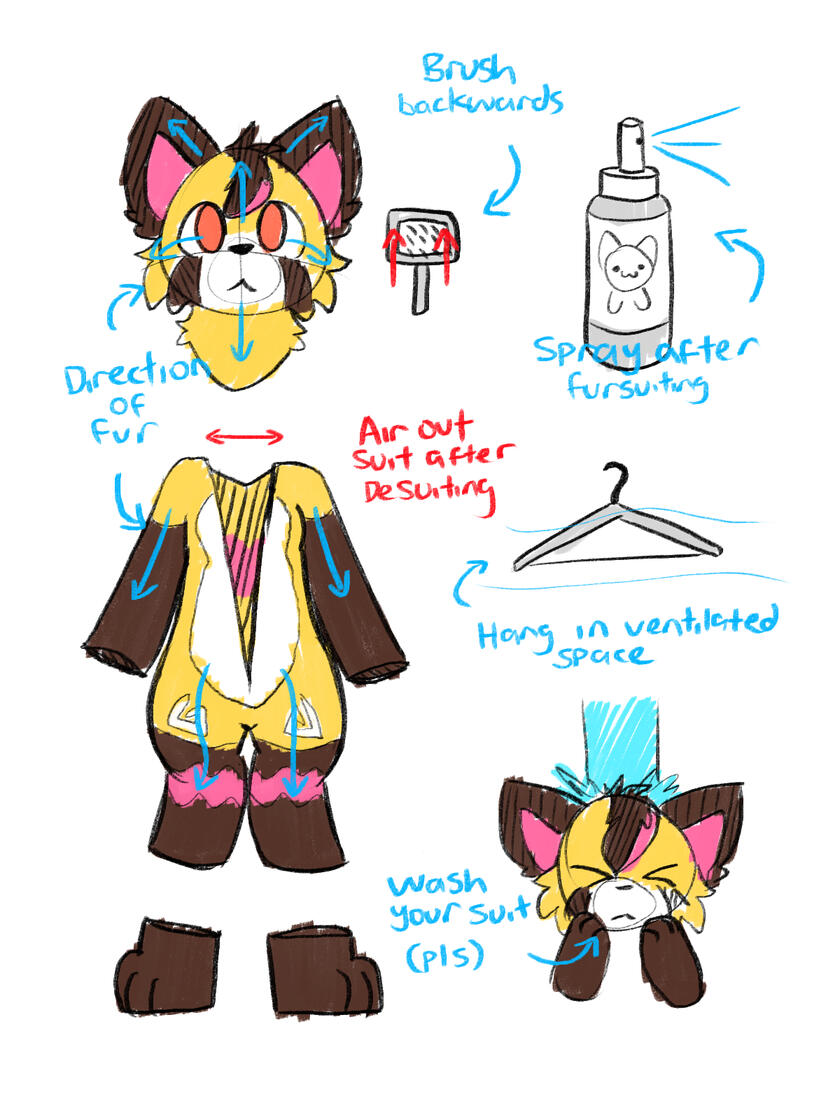
Washing your Fursuit
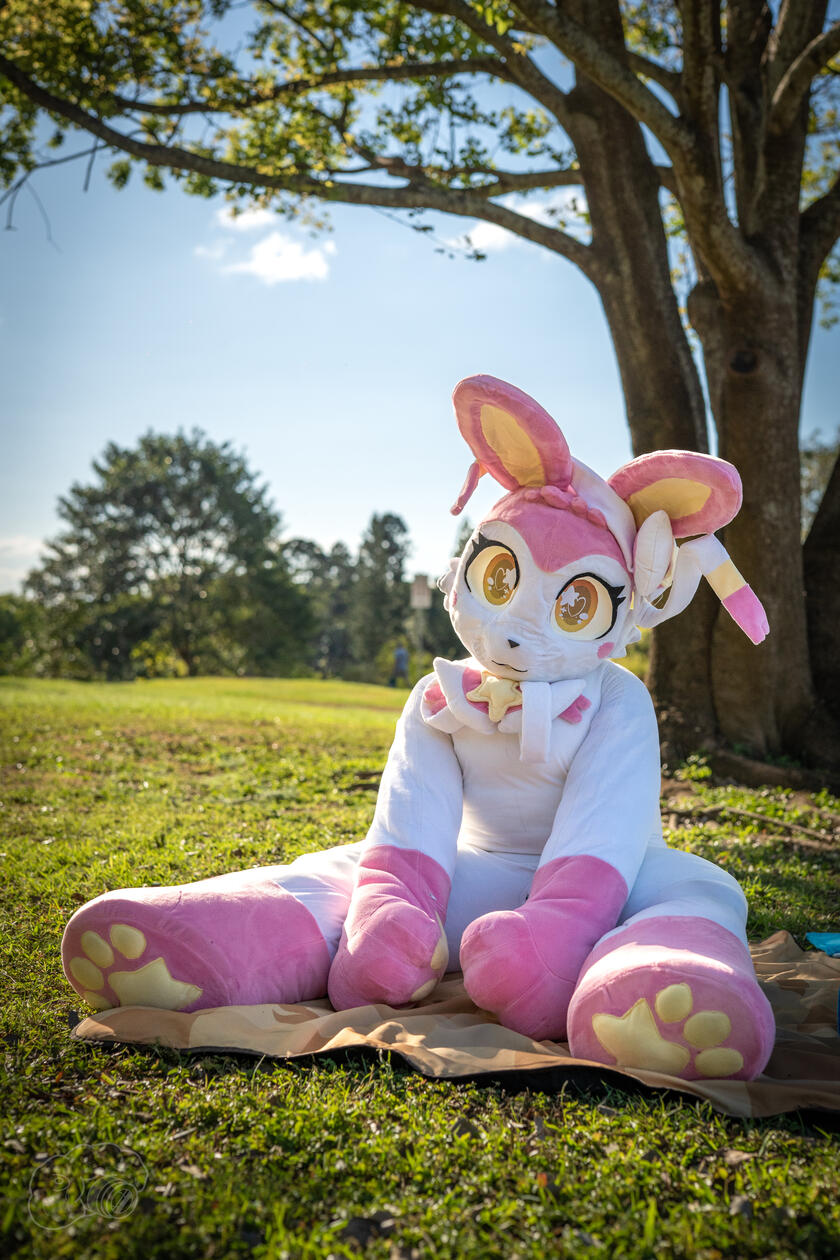
Use liquid detergent, don't use the powdered laundry detergent
Use a washing bag (or pillowcase) if possible in washing machine
Use a smaller amount of detergent then normal
Use cold water (So dyes don't fade, fur doesn't melt together & glue stays in place)
Brush your suit while it dries (Keeps the fur in the correct direction after drying, stops clumping)
Always air dry your suit
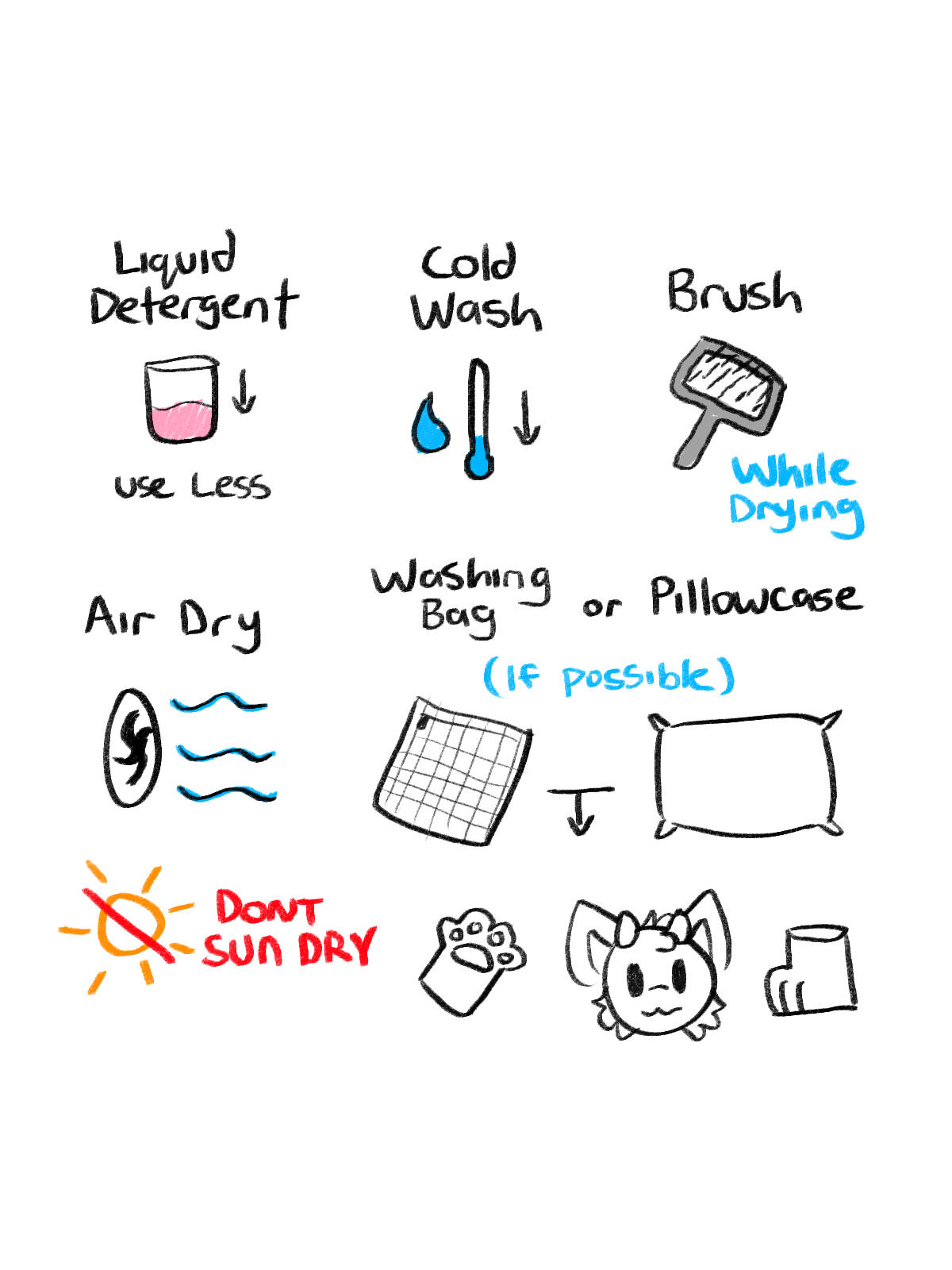
Fursuit Heads
Heads 2025 and onward are 3d printed TPU and completely machine washable
DON'T use a washing machine with the middle turning bar
Use delicate setting, cold water and small amount of liquid detergent
Use fan to dry head
My earlier foam heads are machine washable, use a pillowcase in the wash, cover the eyes with a sock
Alternatively
- Use a carpet washer as intended
- Hand washing in tub of water similarly to washing a plush, be careful of eyes and prioritise drying ASAP
If you own a 3d/resin printed head, carpet washer is the best choice
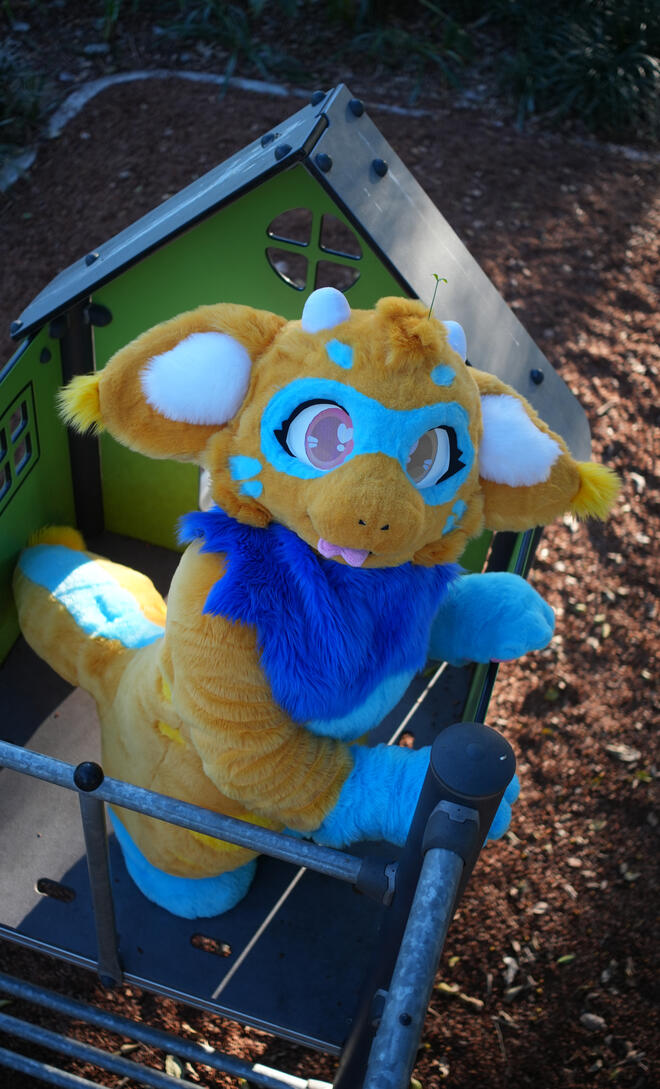
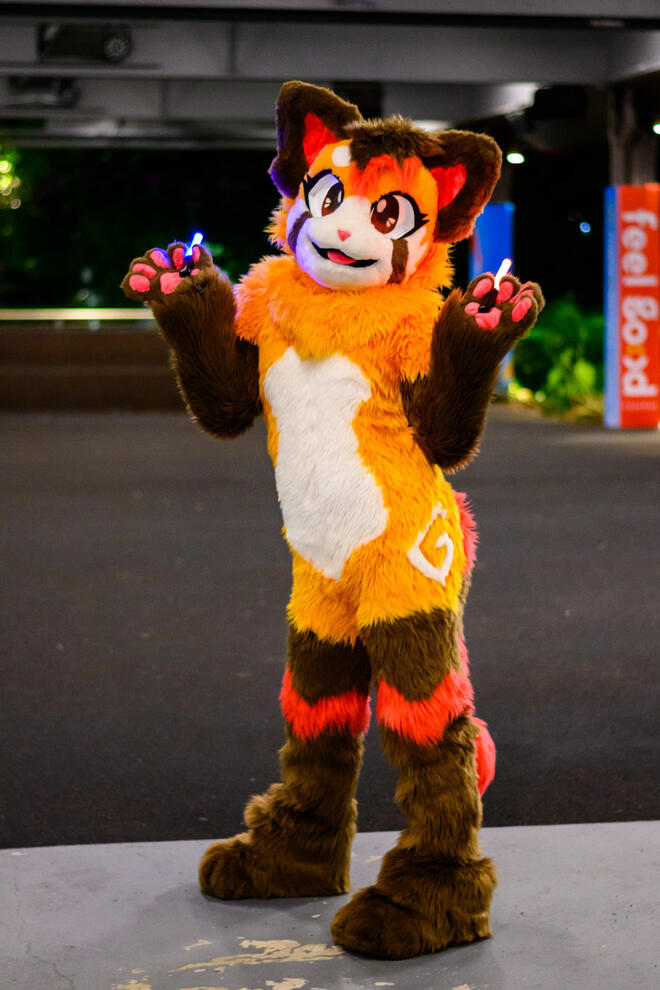
Paws & Tail
Hand paws and tail should be in a washing bag (but not necessary)
Feetpaws can be washed as is, if they are too big, carpet cleaner or hand wash
Loose padding can be washed as is
Bodysuit
Turn your bodysuit inside out and wash on delicate, cold water and small amount of liquid detergent
If tail is attached, remove polyfill via zip if required
Other suits (plush, mini quad)
Wash padding on delicate
Zip up all zippers
Wash minky fabric on delicate, no need to flip
Footpaw padding put in washing bag, can be skipped if you think it is fine
Wash head as usual
Dry as usual
(Plush minky) Prioritise head/padding drying
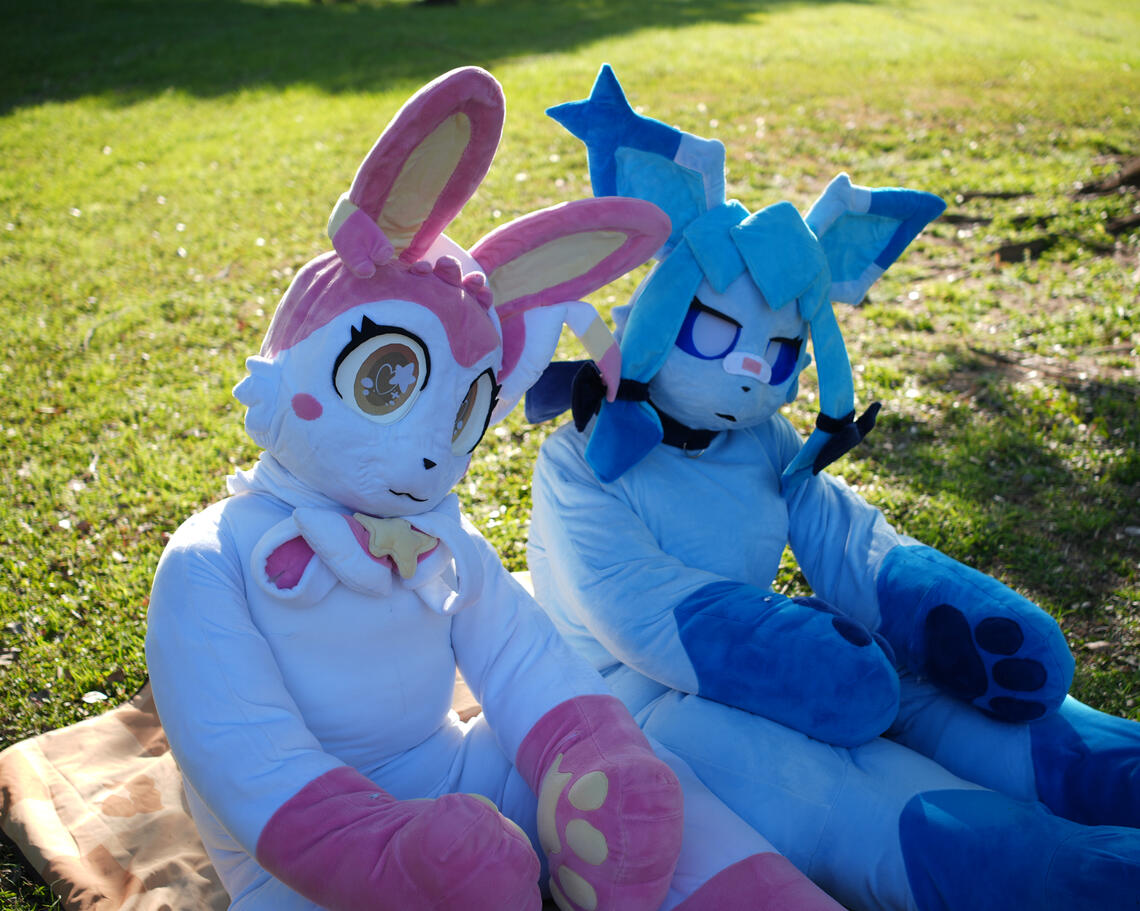
Drying (generally)
Hang in a shaded area; Air drying only
Leave heads on side with the inside exposed, rotate later to ensure the full head is dry
Have a fan blowing into the bodysuit/head
Brush your suit fully, 1-2 times while it dries
If hand washing, a fan is required, please try and dry ASAP, the suit will smell bad due to slow drying speed
Travelling with your suit (Storage for flights)
When travelling with a suit, especially a fullsuit, ensure you have at least 1.5 large suitcases worth of space to use. You don't need to worry about going overwight but fursuits take up a lot of space so here are some extra items you should consider using;
Vaccum bags - Reducing space of bodysuit & tail
Packing cubes - Organising clothing and non fursuit items
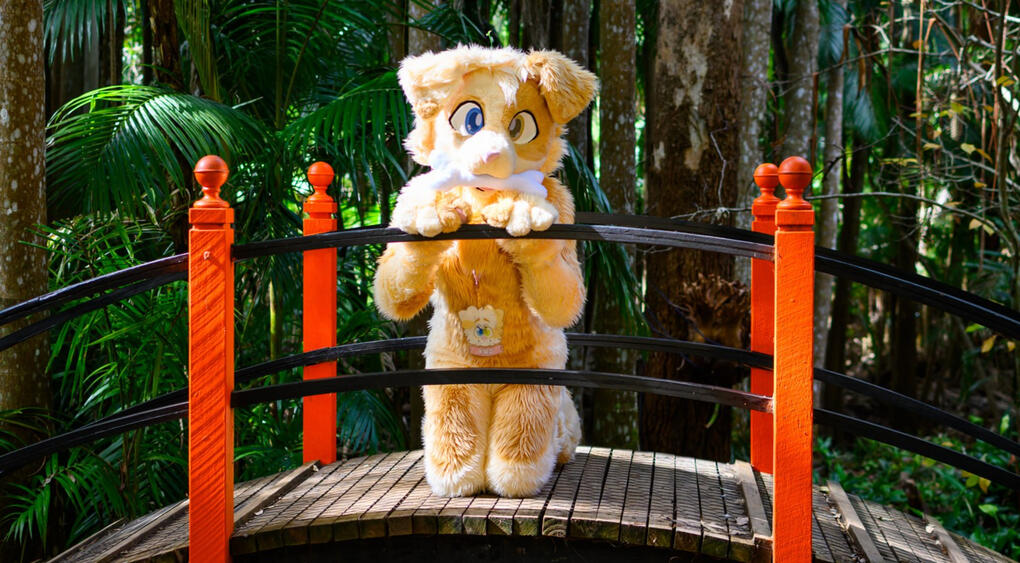
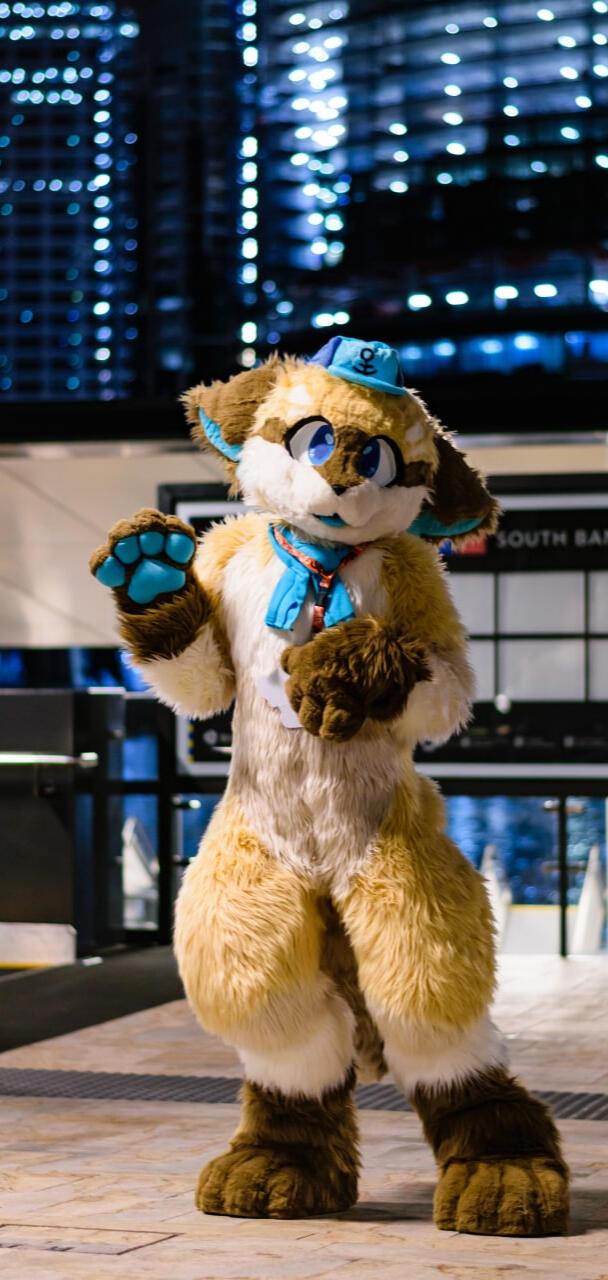
Digitigrade suits & partials
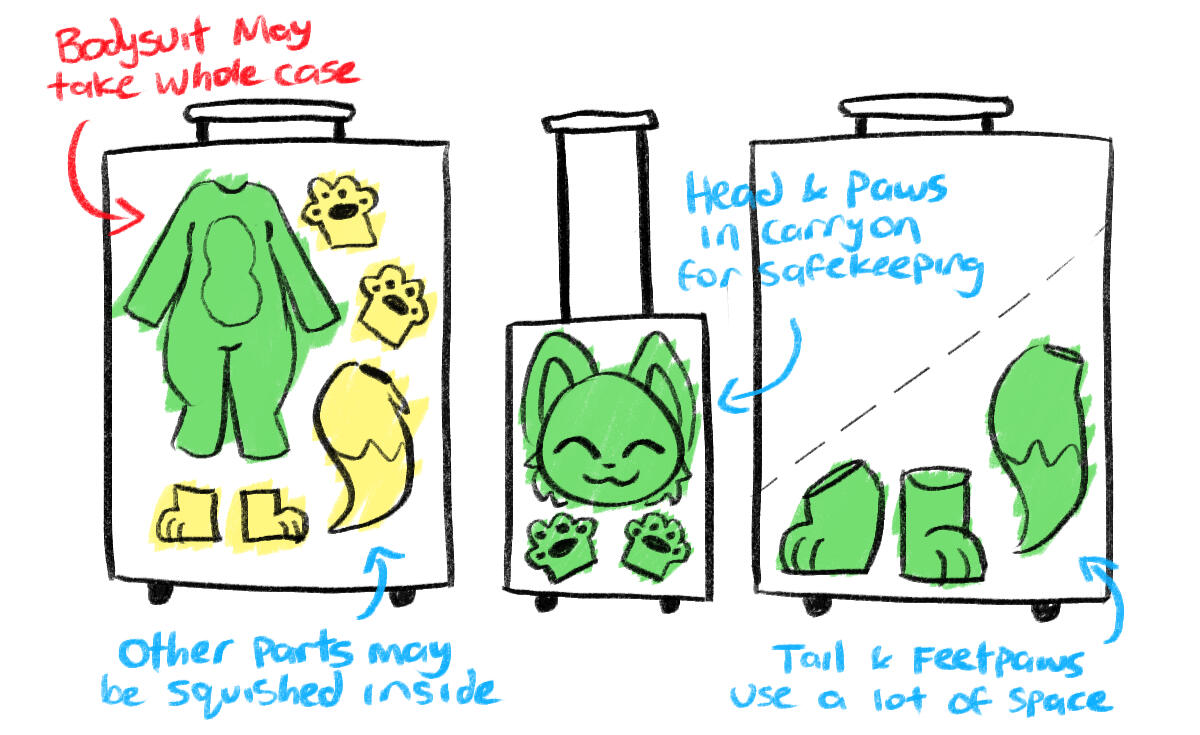
Head and paws should be put into a carry on case to ensure safe travel
The bodysuit takes a whole suitcase
The paws, tail and feetpaws may squish into the same case depending on how much space is left, the rest will go into a 2nd suitcase
The feetpaws take a significant amount of room
Plantigrade suits
Whole suit can potentially be put into 1 suitcase
Head and paws should still go into a carry on for safe keeping
Plantigrade fursuits have smaller feetpaws
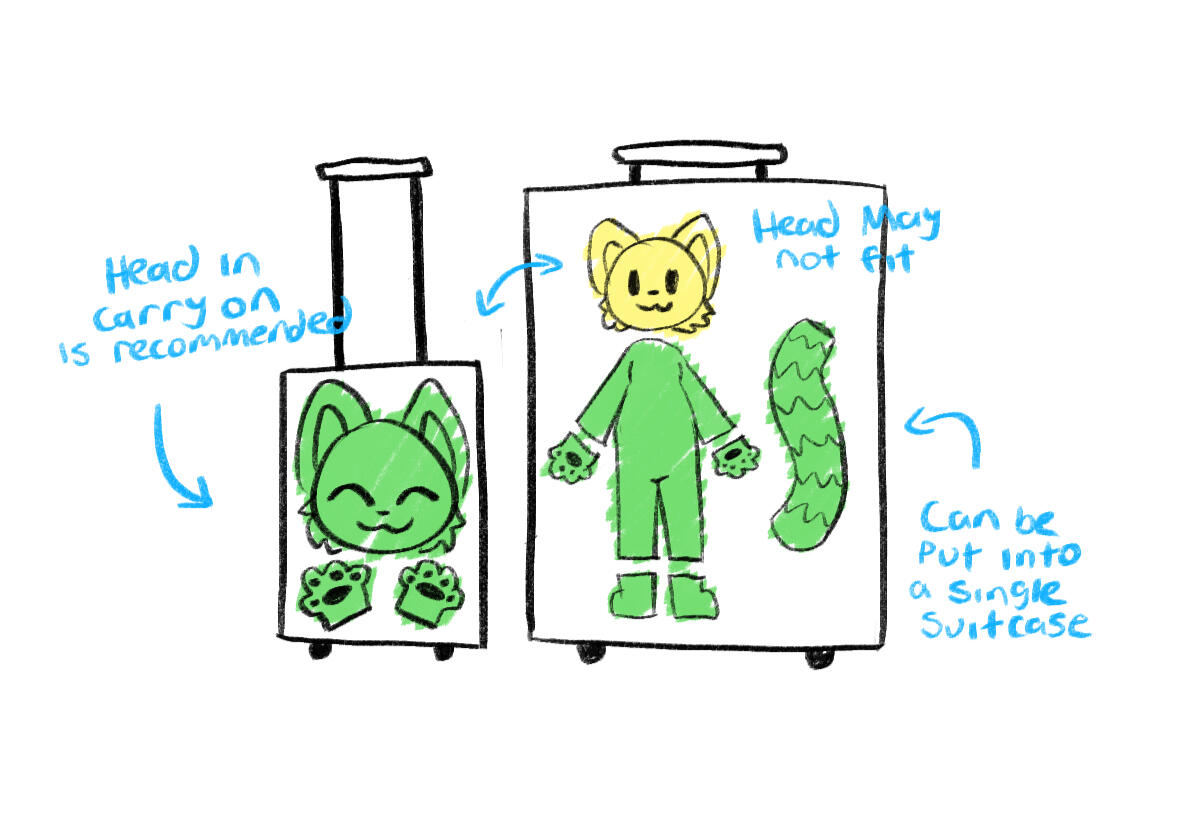
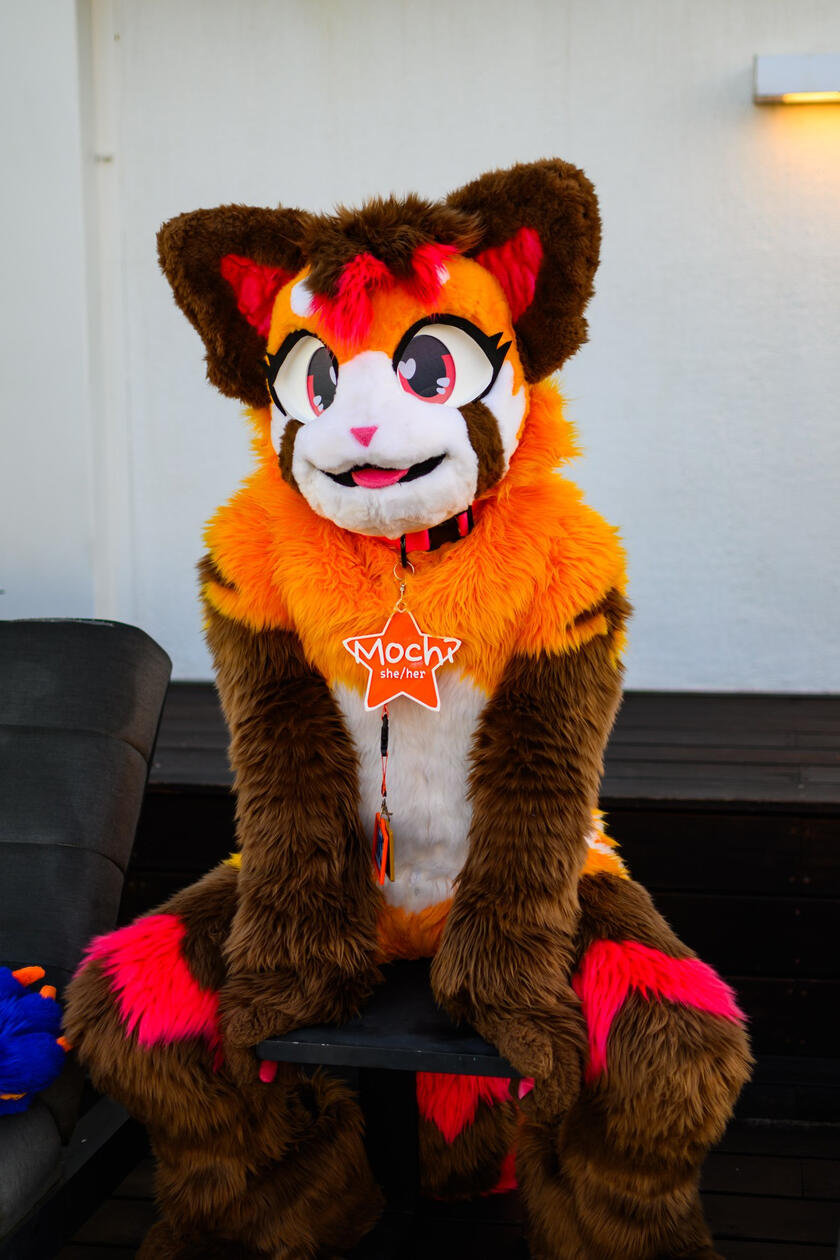
Fursuit maintenance
If you see any holes/popped seams. Turn inside out and use blanket stitch to fix them. The most versitle stitch for fursuit fixtures!
Holes in tougher spots may require a ladder stitch or help from a capable fursuit repairer
Any stains, manually spot clean with laundry detergent by massaging it into the spot until it fades, then clean suit as normal. (Other methods may be required for more resistant stains)
Links to useful videos [wip]
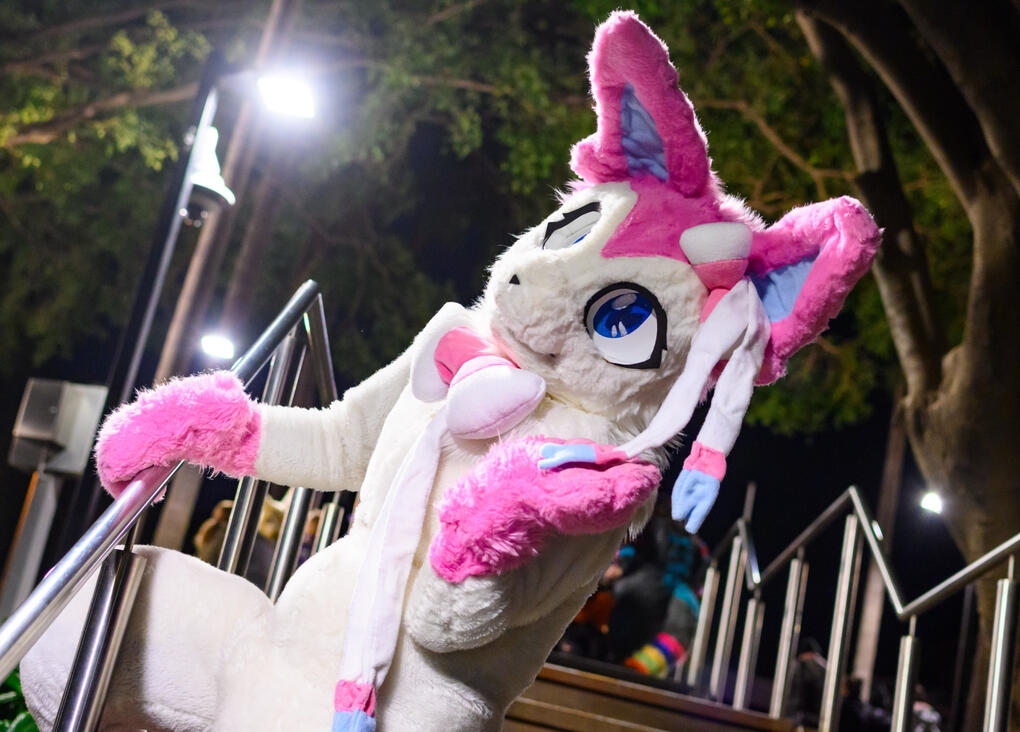
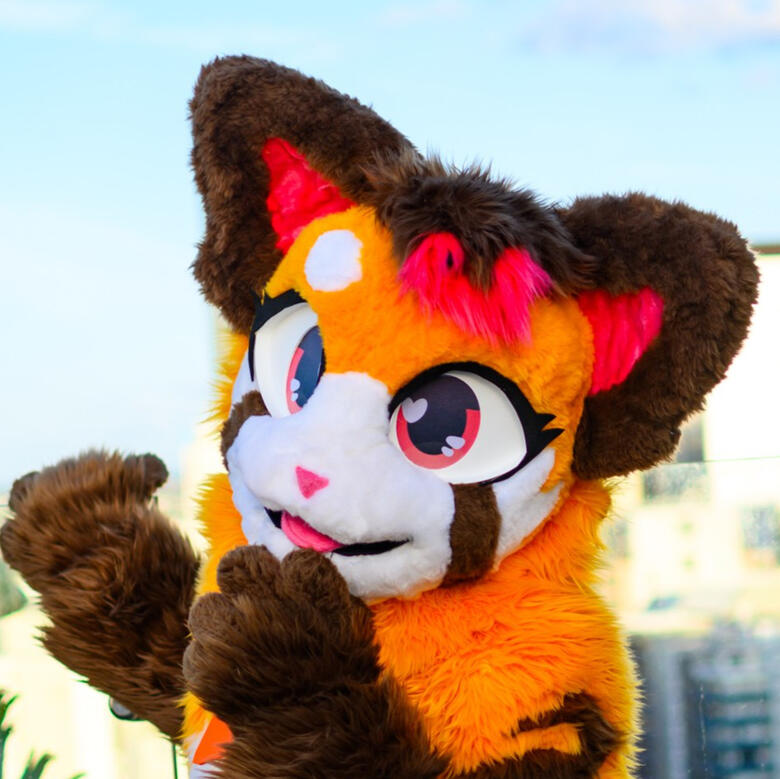
Manguwu fursuits
Commissioner's Guide
Small guide commissioning me & some resources on making DTD's for your commission
Photos Credits: Negadrake
How to quote/commission
Quoting the fursuit maker is the most accurate way to get the price of your suit. It can be quite exciting finding out how much it is to finally commission your fursuit!However, do note that this takes time to do, some makers even charge for quotes... And they normally expire after a time period! So make sure that you can already financially afford it before asking for one!If you are not ready to quote, base your fursona off of the base prices of the maker, ensuring that you add a bit extra if you believe your suit has something that may increase the price. Things such as wings, lots of markings, irregular/asymetrical shapes and more can increase the price. Price increases vary but having an already pre-existing estimation can be very helpful for budgeting before commissioning.
Below is a list of things that I require you to send to me in order to quote you properly. This also allows me to understand what you want so I can can bring up any issues and to give you the correct price.Don't worry about oversharing your ideas or things that are important to you, this communication is what is needed to ensure that no extra charges or sneaky mistakes happen later down the line
Note: This is currently what I want in order to initiate a commission. Other makers may differ.
| What to provide | Why? |
|---|---|
| Character name | Who? |
| Species | What are you? |
| Fursuit type | What would you like? (Head/Partial/Planti/Digi/Special Request) |
| Your Weight & Height (Fullsuits) | This is so I get an accurate estimate on materials needed for the quote and pricing, an estimated weight is good enough but this is very helpful earlier as I don't have your DTD yet |
| Reference Sheet | A character reference to see what I am working on (How to provide a ref sheet) |
| Features [Optional] | Anything you would like as part of your fursuit. Specific requirements or things to be desired. This does not need to be done if you believe your character fits a 'normal' fursuit (Examples in ref sheet section) |
| Extra comments [Optional] | Anything to be noted to me |
Providing a reference for a quote
The reference sheet is to show off all of the features of your character.
An acceptable reference sheet will at least include full frontal view and a full back view. It will show all major details of your character.
Note: This can be used for other makers but I specifically tailored this to my liking ^^
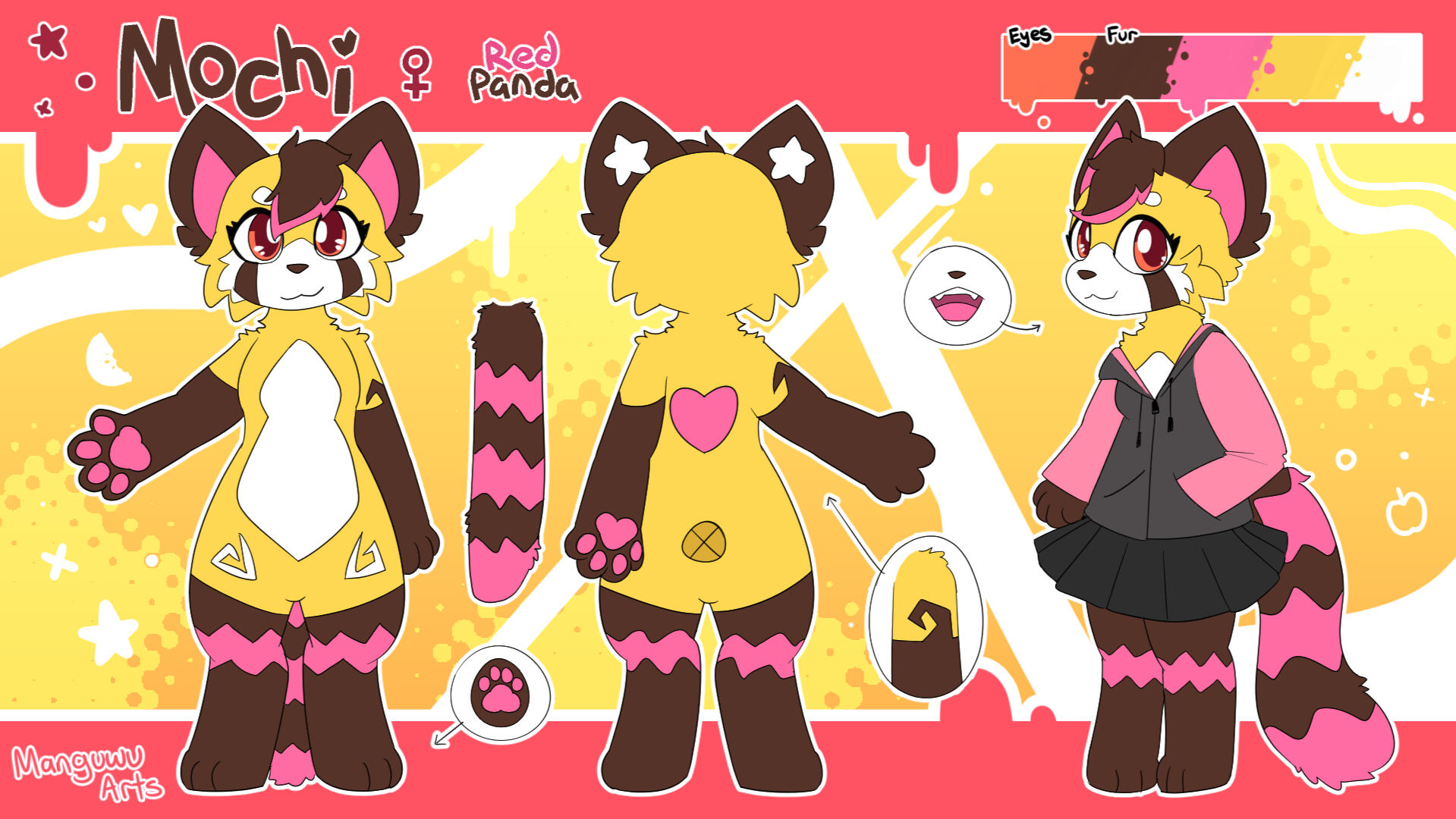
A reference sheet should have:
Front & back view (minimum), a side view (recommended) in a T or A-Pose
NO shading, flat colours only
All details are shown (paws, maws)
No details are obscured (Clothes & wings can hide details)
Anthromorphic & human-shaped
Human shaped: The reference can feasably be used as a 1 to 1 to a fursuit if someone was wearing it. No 'feral' character or weird anatomy unless adapted
Good details to have
Draw markings separately (when the full marking is being obscured)
Accurate sized to suit (Proportions are accurate)
Ref sheet is drawn in the style you are planning to commission (plantigrade, digitigrade, ect.)
Labels to character traits (eg. hair always goes left)
Extra head turn-around
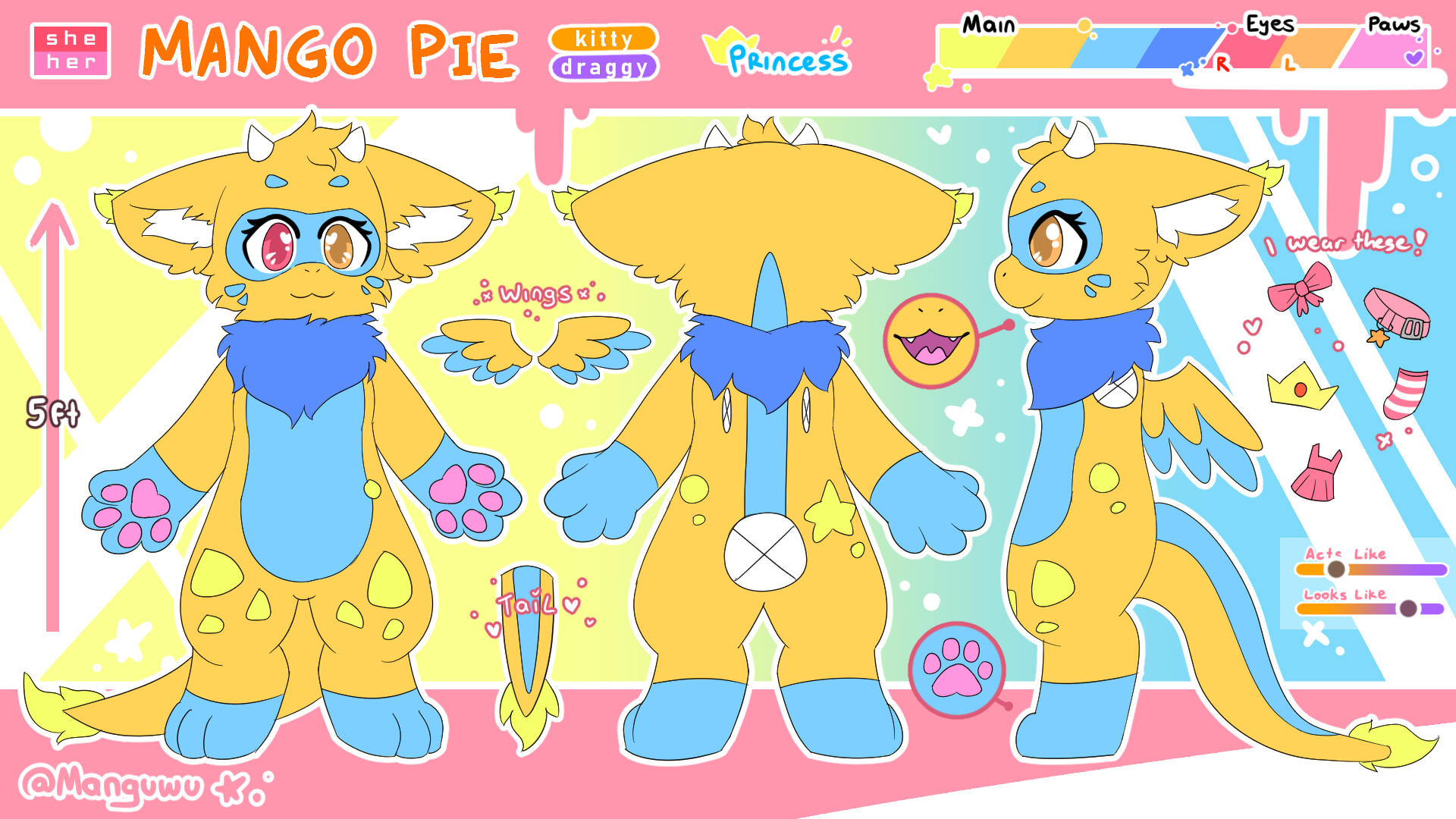
For obscure or important details, please make a note of it while you are providing the reference
"Make sure to remember the yellow marking on the left belly and star on the back"
If there are specific things you want for your suit, please include them in the quote
"I would like the wings to be large, 70cm long"
"I want a dropped crotch and indoor feet paws"
"Can you make the tail a bit shorter and thicker and the horns be solid?"
"I want extra chest padding for her"
Extra:
ZeeKay Arts' fursuit friendly ref sheet. This much detail is not necessary but the more details the better.
[Ref sheet] [Video] (also credit to Zee as I used this video for additional tips)
Making a DTD
List of things required (Minimum)
Duct tape or Cloth tape
Painters suit
Scissors
Permanent marker
Saran wrap / Cling wrap
Before following the tutorials! !
I like having access to the zipper at the front of the painter's suit (if there is one) to access the inner area easily, please leave this intact when cutting or tape around it
Mark out where you ideally want your wings, tail & other appendages to go
For comfort, have a broom or related handy to help the tapee hold up their arms, it is tiring holding a T-pose.
Don't substitute this, holding onto a pole or wall (immovable object) is very tiring to the tapee.
I recommend having at least 150 meters of tape (more is better)
Wear clothes you don't mind damaging (in case mishaps happen during the cutting phase)
Apply in strips of tape, don't wrap your tapee with long strips
It will be too tight and cut off circulation while you pull the tape while applying it
I personally recommend this DTD tutorial from Skypro Fursuits, it is very short, to the point and has explainations at all steps (5:24)
If you want a longer, more informative video, SplitGrapeSoda has a slower pace video. Slightly different technique but still good to follow (20:05)
Extra measurements
Feetpaws require you to provide your shoe size, please specity which size chart you are using (AU, EU, UK, US) or convert it to the size your maker is using, I use AU. Additionally provide the length of your foot in case of error.
I use hand measurements to ensure that the paw is correctly sized. To do this, trace your hand out on an A4 sheet of paper and send it as a photo. No scan is required but take a flat photo of the paper(You can also send this with your DTD but still send a picture)
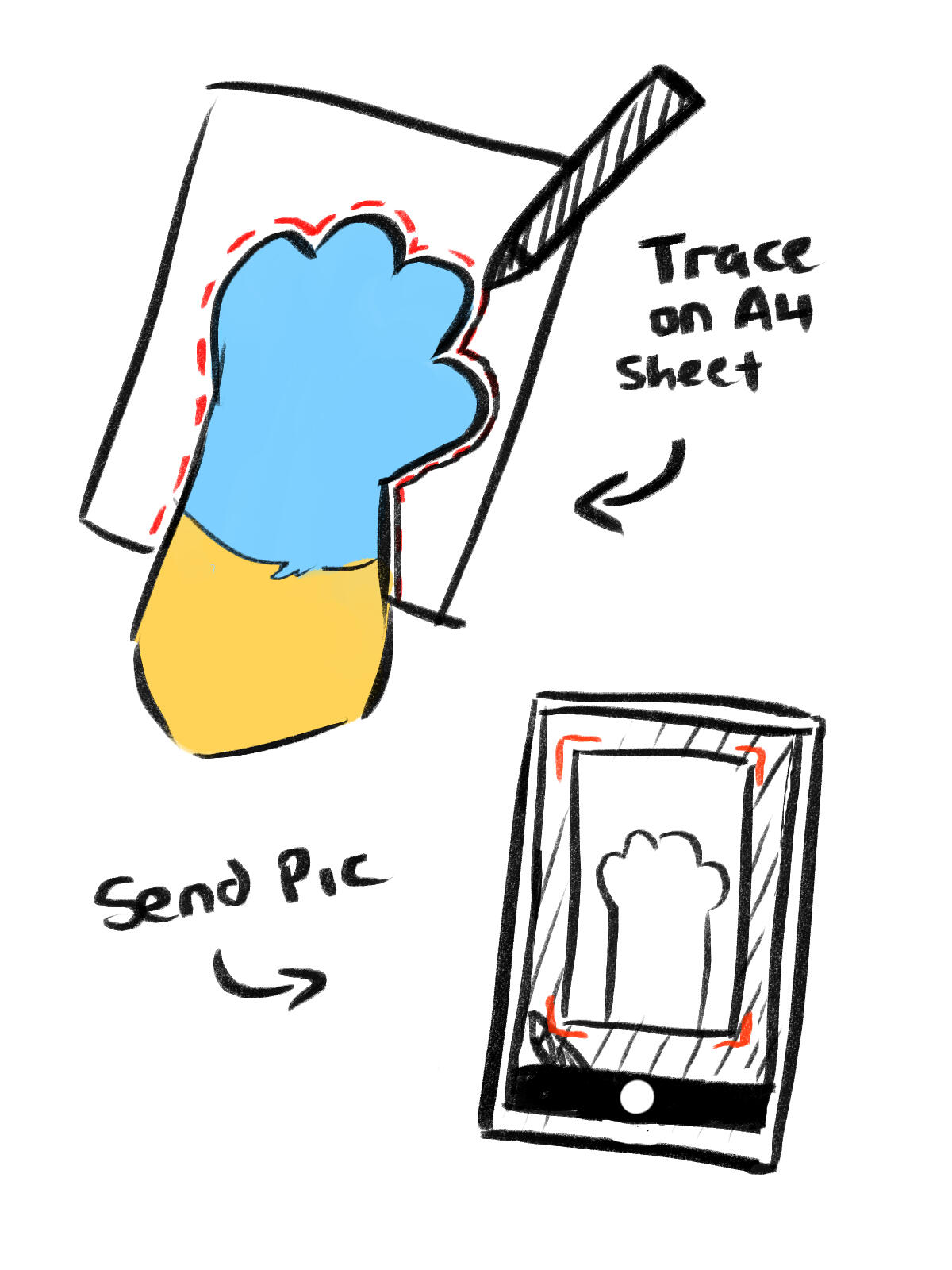
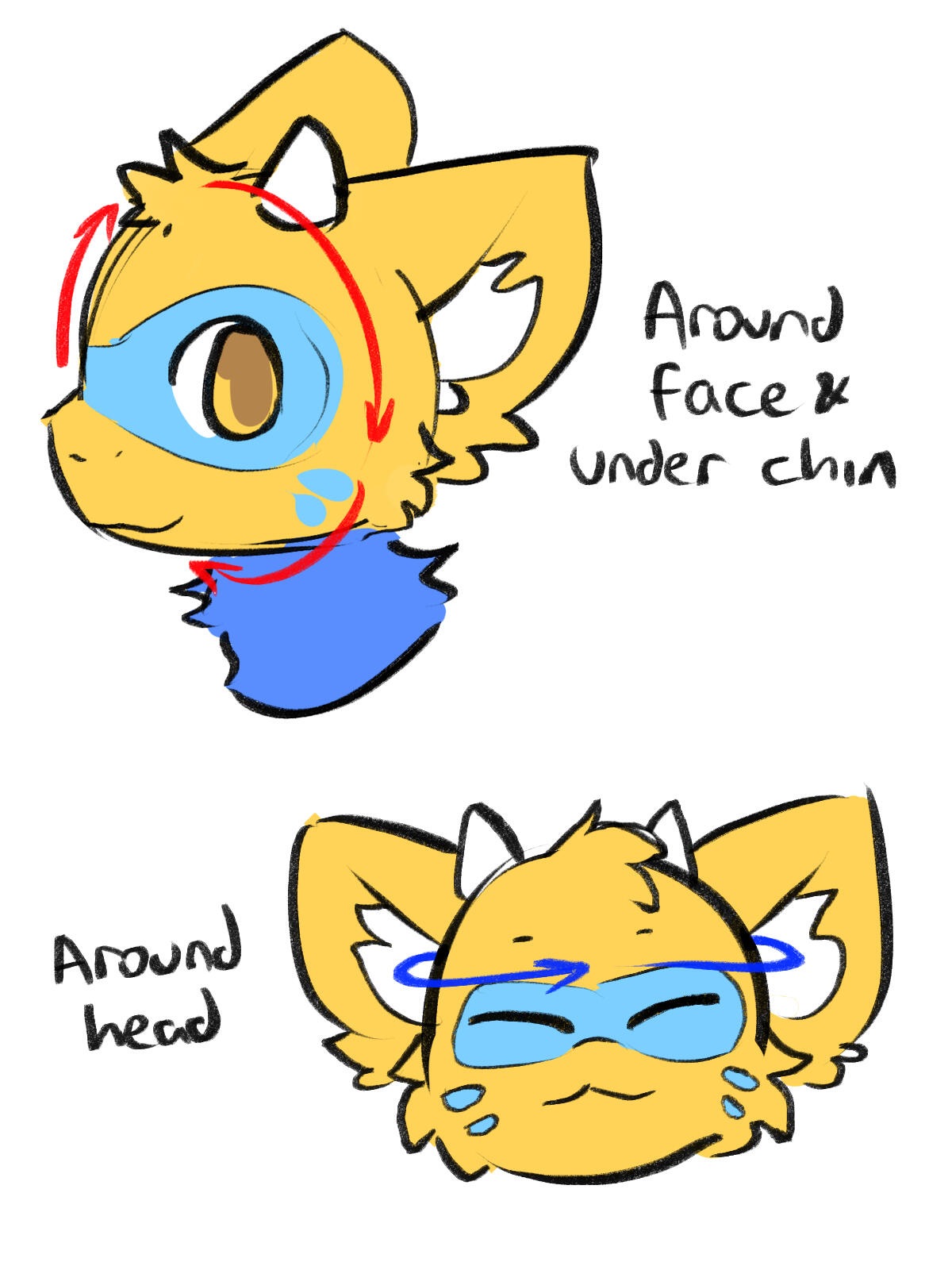
You may be asked to do a head measurement, use a measuring tape to measure;
Vertically - the full length around your head from under the chin to around the top of your head
Horizontally - around the head level to your eyebrows
